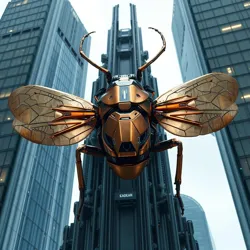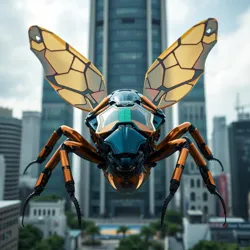Neo Tokyo Synthetics

Neo Tokyo Synthetics (NTS) is a leading biomechanical engineering corporation headquartered in the Neo Tokyo Megalopolis. Founded in 2145, the company has pioneered numerous breakthroughs in synthetic life development, particularly in the field of mechanical arthropods and automated ecosystem design.
History
The company emerged from the merger of Takashi Robotics and Quantum Biology Institute during the Great Synthetic Revolution of the 2140s. Under the leadership of founder Hiroshi Kagemine, NTS quickly established itself as the primary developer of biomechanical insects and arthropods for industrial and environmental applications.
Major Developments
Hextron Initiative
NTS's most significant achievement was the development of the Hextron Beetle program in 2157. These copper-shelled synthetic insects revolutionized micro-robotics and established new standards for biomechanical fusion technology. The program has since expanded to include various subspecies optimized for different industrial applications.

Synthetic Ecosystem Integration
The company's Artificial Habitat Division has successfully implemented synthetic arthropod colonies in various urban environments. Their most notable project, the Neo Tokyo Garden Network, maintains the city's ecological balance through a complex system of mechanical pollinators and maintenance drones.
Research and Innovation
Neo Tokyo Synthetics maintains several cutting-edge research facilities, including:
- The Biomechanical Evolution Center
- Quantum Wing Research Institute
- Synthetic Hive Development Laboratory
Corporate Structure
The company operates through five main divisions:
- Research and Development
- Industrial Applications
- Environmental Systems
- Medical Biotechnology
- Defense Solutions
Notable Projects
- Project Chrysalis - Integration of quantum computing with synthetic butterfly species
- Urban Maintenance Swarm - City-wide network of maintenance arthropods
- Micro-Fusion Core Development - Revolutionary power systems for synthetic insects
See Also
- Synthetic Ecosystem Design
- Biomechanical Engineering Standards
- Corporate Hive Mind Networks
- Quantum Arthropod Research
References
- Annual Synthetic Biology Report 2167
- Neo Tokyo Industrial Archives
- Biomechanical Engineering Quarterly
- Journal of Synthetic Evolution